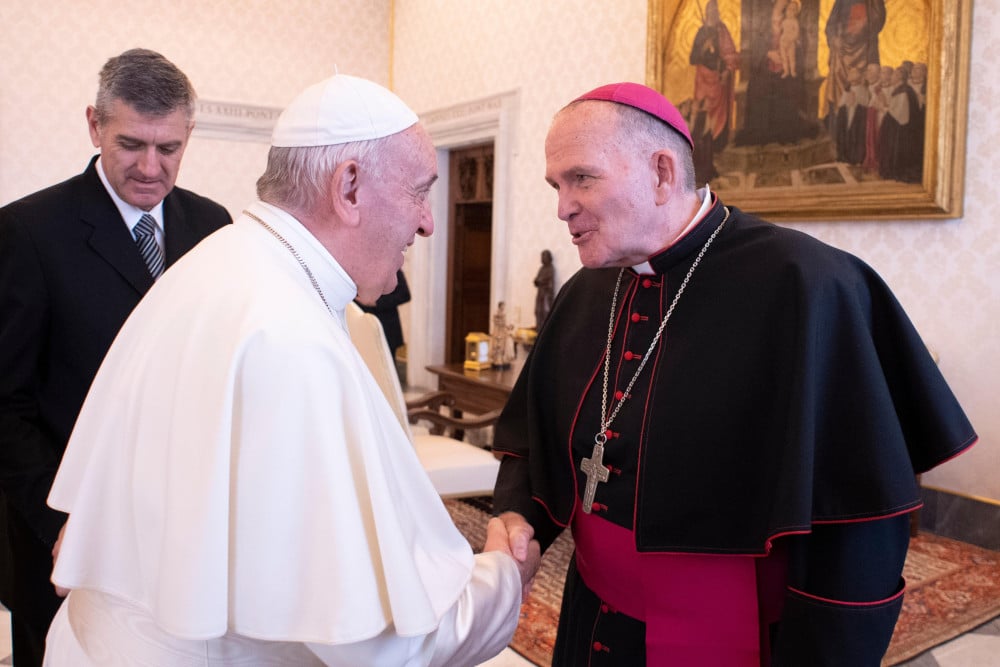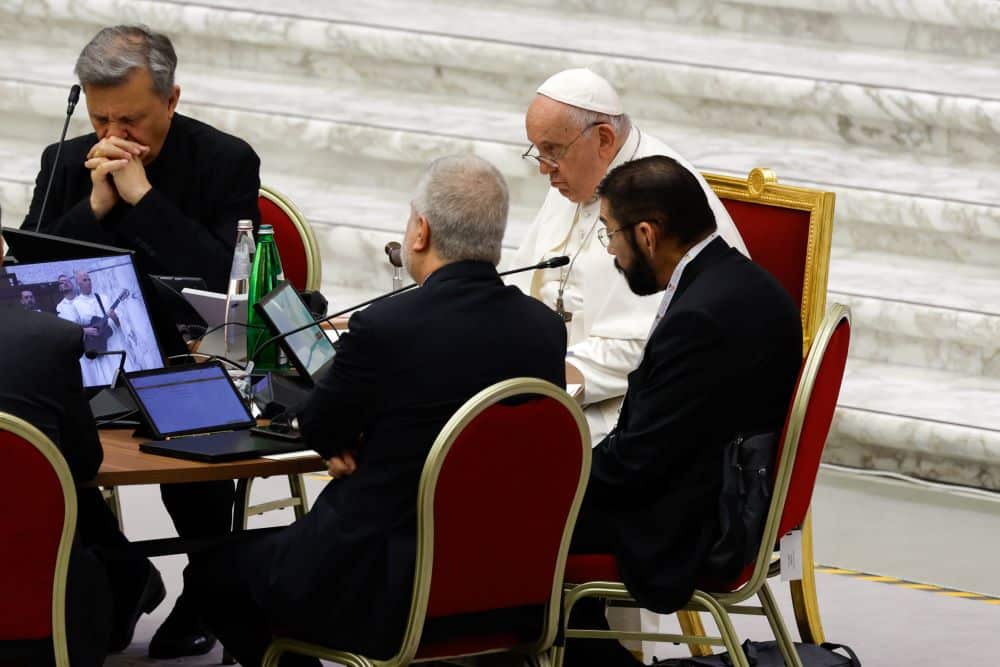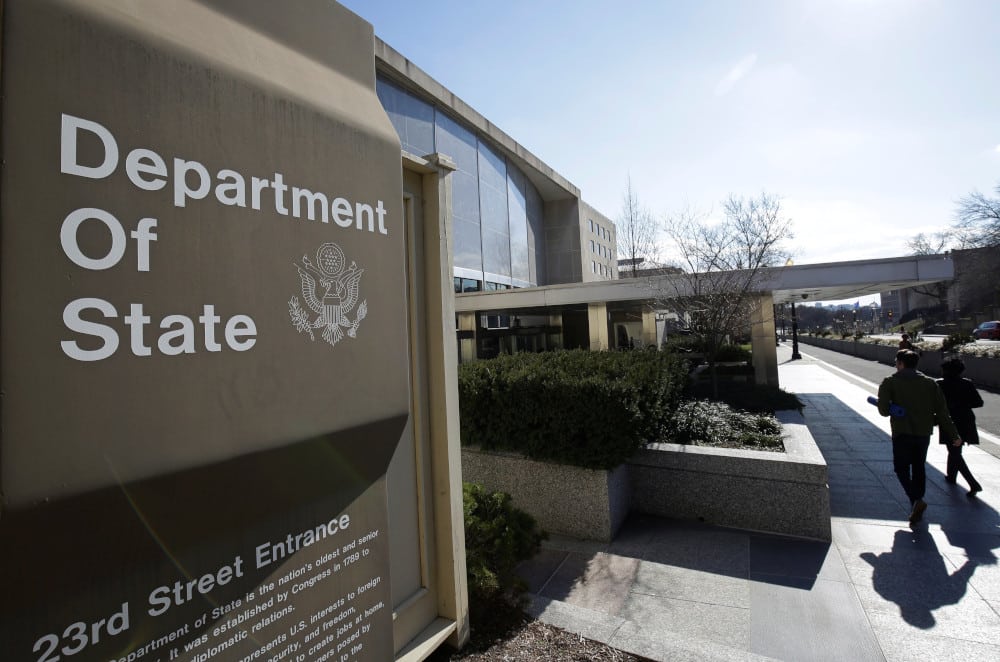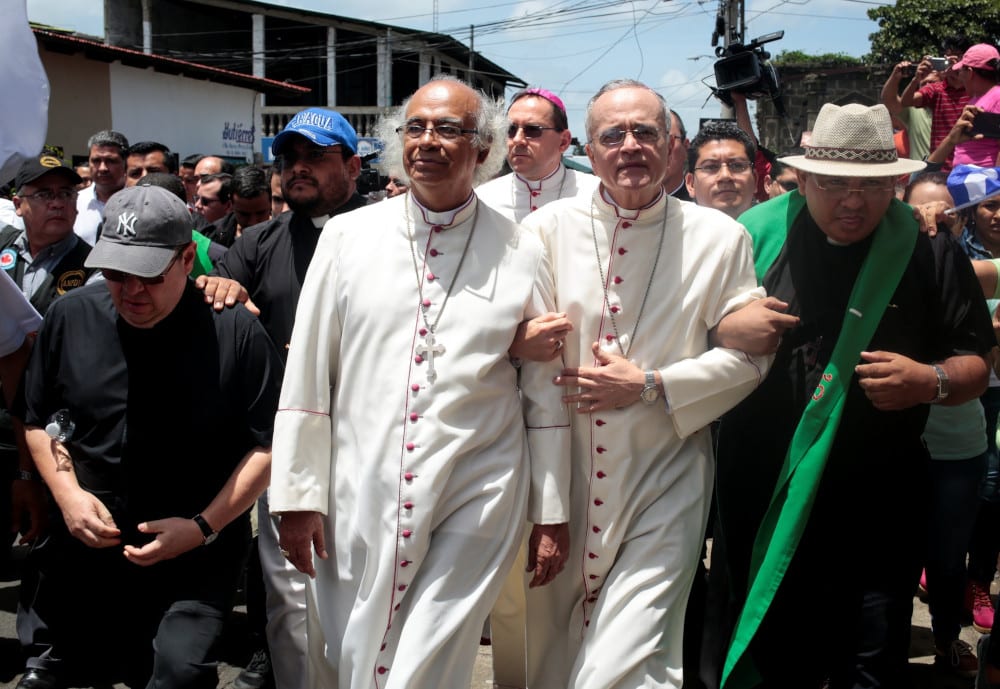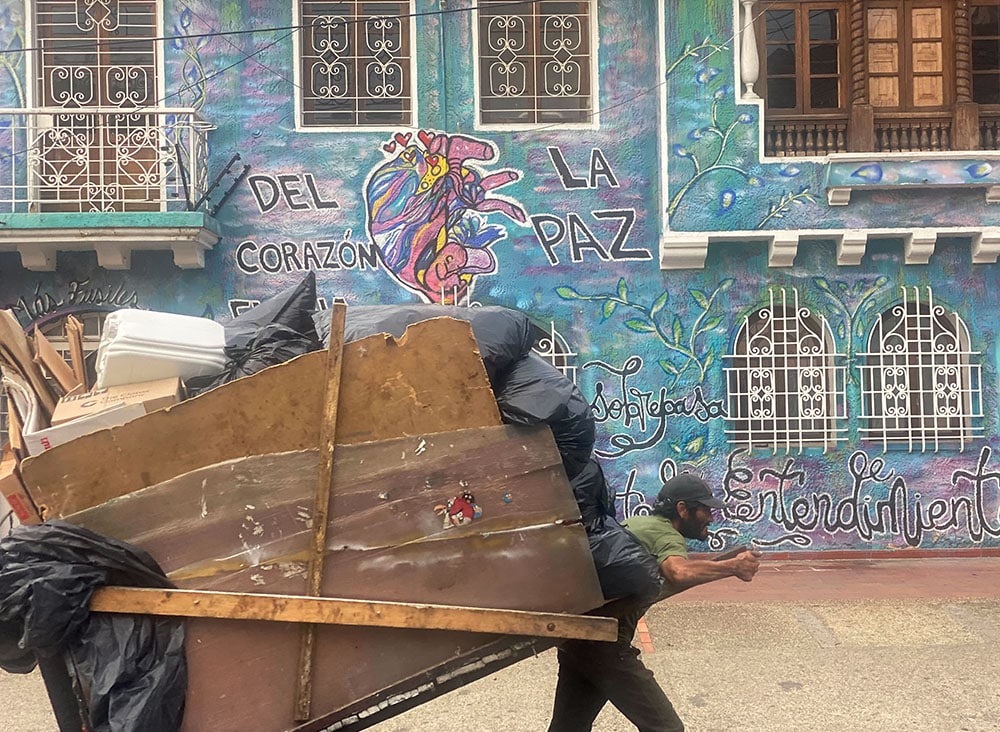Sor Diana Herrera Castañeda todavía recuerda esos fines de semana tensos de su niñez en Bogotá.
« Fue la época de Pablo Escobar, dijo Herrera. “Yo tenía unos nueve años. Los viernes, sábado y domingo, a partir de las tres, cuatro de la tarde, por todos lados escuchaba bombas. Y uno estaba en su casa, con sus papás, con tíos, siempre con el miedo », explicó.
La preocupación era más grande cuando algún familiar andaba fuera de casa.
Años después, como adulta y hermana de la congregación Santa Catalina de Siena, se dio cuenta de que lo que otros sufrieron en ese tiempo había sido mucho peor que la angustia en la ciudad.
« Es muy distinto cuando uno escucha la historia de la gente de [las zonas rurales], donde estuvieron desplazados », expresó y agregó: « Tuve la oportunidad hace siete años de trabajar con dos asociaciones de mujeres campesinas… ellas sí contaron cómo sus mamás las sacaron en las noches para evitar que el grupo armado ilegal las [llevara] y las violara y se llevará a sus hijos reclutados ».
Ahora, como académica, Herrera estudia el rol de hermanas religiosas en el conflicto de más de 50 años en Colombia.
« Uno empieza a encontrar que la vida religiosa femenina ha jugado un papel importantísimo de acompañamiento y sobre todo en los sitios de más violencia; de resistencia del pueblo », dijo Herrera en una entrevista el 22 de noviembre en Bogotá con Global Sisters Report. « Es una historia que yo siento que es bastante silenciosa y oculta », apuntó.
Tal vez las hermanas no han estado presentes en las mesas de diálogo entre grupos enemigos, como miembros de la jerarquía de la Iglesia en Colombia, algo que resultó en la firma de acuerdos de paz en 2016; pero con sus ministerios y presencia en pueblos que sufrieron cerca y lejos de la capital, las religiosas han contribuido a los procesos de paz de una manera íntima, manifestó Herrera.
En muchas ocasiones, han « enseñado a ver de otra manera este momento de dolor, de angustia, a resignificarlo a través de proyectos productivos », dijo.
Las religiosas han ayudado a recuperar la memoria histórica de lo que sucedió en lugares que sufrieron desproporcionadamente la guerra, y aún acompañan donde el conflicto sigue. En sitios como el Chocó, Antioquia y Granada, ellas han impulsado proyectos de costura y de panadería que han generado las condiciones para que las víctimas destapen su dolor o participen en una actividad que les ayude a meditar, y luego motive a hablar de sus pérdidas y atropellos, iniciando así un proceso de sanación. A veces, para las hermanas, eso significa sentarse a participar en alguna manualidad y acercarse a personas que no han podido hablar antes de sus traumas, dijo Herrera.
« Uno se sienta a coser con ella [la persona]. Y es muy bello porque entonces la costura no es sencillamente tejer… sino empezar a coger los retratos de los seres desaparecidos y pegarlos en el crochet; tomar el nombre de una persona desaparecida y decorarlo con flores o con símbolos », explicó la religiosa.
Y en Colombia, historias de dolor y violencia, y personas que necesitan sanar, abundan.
En algunos lugares, como el Centro de Memoria, Paz y Reconciliación en Bogotá, se pueden escuchar historias representativas de la guerra, como la de Gloria Inés Alvarado. Sus ojos todavía brillan cuando ve la foto de su querido Luis Alejandro Concha Alvarado, su único hijo. Era un extraordinario violinista, asevera ella, y estaba concentrado, a los 23 años, en sus estudios de Filosofía en la Universidad Libre de Bogotá. Al joven le faltaban apenas días para salir a París, donde había recibido una beca para continuar sus estudios.
« No creo que mi hijo haya sido perfecto, pero fue extraordinario: como ser humano, como persona, como familia, como compañero », afirmó Alvarado, mientras contemplaba una imagen, en medio de una exhibición el 22 de noviembre, que incluía fotos de su familia. “Pero la noticia que se dio al mundo el 16 de abril del 2006 era que mi hijo era un terrorista », expresó.
Para su madre, el joven Concha Alvarado ese día no solo se convirtió en otra víctima del conflicto armado, sino también en una víctima de las mentiras del Estado.
Funcionarios del Gobierno insinuaron a miembros de la prensa que Luis Alejandro Concha Alvarado y tres otros estudiantes —que murieron junto a él durante una explosión en el edificio donde su familia vivía— estaban armando explosivos para ayudar a las Fuerzas Armadas Revolucionarias de Colombia, conocidas como FARC.
A pesar de las insinuaciones, los funcionarios nunca presentaron pruebas ni investigaron el incidente, aseveró Alvarado, quien añadió que lo único que hicieron fue sembrar duda y dolor para la familia, al igual que para miles de colombianos que todavía piden respuestas —todavía sin contestar— sobre muertes o desapariciones durante el conflicto armado.
Ilustrando el dolor que muchos como Alvarado llevan consigo día tras día, el informe final de la Comisión de la Verdad (publicado en 2022) reveló « cómo [algunas] mujeres tuvieron que ver que entraron a sus casas, mataron a sus esposos, se llevaron a sus hijos y violaron a sus hijas », afirmò Herrera, quien añadió que esto no solo lo realizó el grupo guerrillero, sino que « desafortunadamente, el Ejército [también] hizo parte de todo esto ».
Lo que no se encuentra en el informe de la Comisión de la Verdad es la entrega de muchas religiosas durante esos tiempos, afirmó Herrera, pero que en algunos casos ha sido muy visible, como el de la hermana Maritze Trigos Torres, de las Dominicas de la Presentación.
En una entrevista de 2019 en YouTube, Trigos —una defensora de derechos humanos por más de 30 años en diferentes lugares de conflicto en Colombia— aparece hablando de su « opción por el que más necesita, por el que le han violado los derechos humanos ».
« Ayudó a la gente a hacer sus derechos de petición; [enseñó] a la gente cómo funciona la justicia en Colombia y a hablar”, expresó Herrera. « Hizo parte de la unidad de búsqueda de los grupos de desaparecidos y [ayudó] a encontrar los cadáveres de la gente que habían matado », añadió.
También existen casos, cuenta Herrera, de hermanas como Yolanda Cerón, de la Compañía de María, asesinada a tiros por paramilitares en septiembre de 2001, frente a una iglesia en el casco urbano de Tumaco, Nariño, al suroccidente de Colombia.
Igual que Trigos, Cerón vio la necesidad de unirse a la denuncia y de ayudar a defenderse a quienes estaban a su alrededor, muchos de ellos afrocolombianos e indígenas.
« Las pandillas ilegales están surgiendo, también los grupos del narcotráfico… y en eso tuvieron que denunciar al Estado colombiano, y ahí fue donde empezó todo el lío, porque el mismo Estado empezó a irse en contra », aseveró Herrera.
Durante los días más fuertes de la pandemia de coronavirus, cuando muchas actividades se llevaron a cabo virtualmente, Herrera tuvo la oportunidad —según ella misma afirmó— de escuchar diálogos de reconciliación en una región, acompañada por religiosas. Esas conversaciones revelan un “acompañamiento en el silencio” de las hermanas, quienes visitaban a las familias y estuvieron con ellas durante el duelo por la muerte o la desaparición de un ser querido; igualmente revelan cómo ayudaron a personas a salir del conflicto de manera clandestina.
« Hay comunidades religiosas que ocultaron en sus casas, en sus conventos, en sus comunidades, a gente para que lograra huir » y sobrevivir, indicó.
Herrera también escuchó sobre una comunidad de religiosas que se dedicaba al acompañamiento a las madres solteras para que no abortaran, ya que algunas no querían dar a luz en medio del conflicto.
« Las acogieron y dijeron: ‘No. Vengan. Nosotros le damos apoyo, pero no lo aborten' », y las acompañaron, incluso cuando llegó el momento de dar el niño en adopción.
Colombia no deja de tener problemas a pesar de haber firmado acuerdos de paz. La guerra, en algunos lugares, pobres y lejanos, sigue en marcha, asevera sor Herrera, y por eso el trabajo de las hermanas también continúa.
« Ahí es donde empieza la vida religiosa a tener más sentido, desde su parte social; [y donde empieza también a decir]: ‘Nuestra tarea es escuchar, ayudar a las personas a ubicarse; no tanto a sanar, pero sí a sacar y a ver que hay otras oportunidades para la vida' », dijo.
Nota del editor: Este artículo fue publicado originalmente en inglés el 26 de diciembre de 2023.
